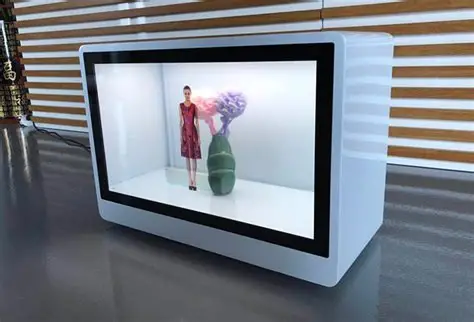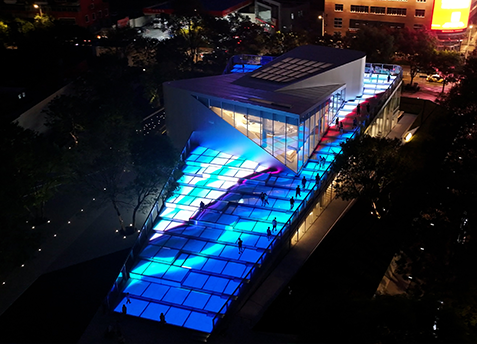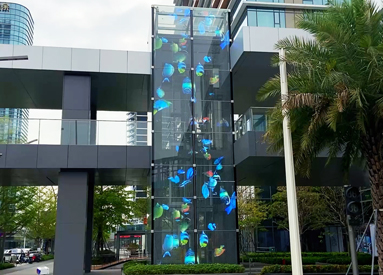

Picture a magical window that can switch between being invisible and showing vivid videos or images—while still letting you see what’s behind it. That’s the core of see through screen technology, powered by either transparent LED or transparent OLED systems. These see through screens consist of ultra-tiny light-emitting components mounted on clear materials like glass or acrylic. They light up to create visuals, while the spaces between them let light pass, preserving the transparent effect. The result? A display that floats in view but doesn’t block your line of sight.

At the heart of a transparent LED display is a finely printed matrix of micro‑LEDs or SMD LEDs arranged in a grid on a transparent substrate. Each LED can be individually controlled—for color, brightness, and on/off state. When off, for these see through screen, you can see through the panel; when on, they produce a sharp image. The higher the gap between these LEDs, the more transparent the screen becomes—making this grid balance resolution and visibility.
Unlike typical screens that rely on thick backlight systems, see-through displays use self-emissive LEDs that shine through the glass. Some variants layer LEDs with transparent conductive films like indium tin oxide (ITO), topped with anti-reflective coatings to maintain clarity and reduce glare. Other models, especially transparent OLEDs, use organic LEDs on glass substrates, providing brilliant color and exceptional transparency, often with touchscreen interactivity built in.

Key to performance is the pixel pitch—the distance between LEDs. Smaller pitch equals sharper visuals but lower transparency; larger pitch boosts see-through effect but sacrifices clarity. Most displays offer balanced options (like P6–P10), achieving 60–90% transparency—ideal for storefronts, events, museums, and hotels. And with brightness ranging from 3,000 up to 6,000 nits, even sunlit scenes don’t wash them out.
Some even more futuristic systems use wavelength‑selective nanoparticles embedded in glass. These particles only scatter light at specific projected wavelengths, letting everything else pass through undisturbed. That means when no image is projected, the glass looks completely clear! Other innovations, like side-lit displays, inject light into thin glass edges that light up via internal reflection—keeping the front crystal-clear.
Transparent OLED screens are ultra-sleek and rich in color. They rely on self-luminous organic compounds, no backlights, and no polarizers. That means they’re slim enough to work like holographic display screens, deliver vibrant imagery, and maintain high see-through levels. They’re ideal for high-end retail, digital showrooms, and futuristic event installations.
These panels are lightweight and modular—easy to install behind glass storefronts or in custom-built display booths. Controllers manage content in real-time, allowing dynamic updates and interactive options like touch sensors or motion detection. This not only delivers a visually impressive display but also invites engagement, making it perfect for interactive transparent displays or window display advertising see through screens.
In summary, see‑through screens work by combining microscopic LEDs on transparent substrates, using clever design to balance brightness, resolution, and transparency. Whether you need a glass LED screen for storefront advertising, a transparent OLED display for luxury brand experiences, or a transparent display for trade shows, this technology blends digital storytelling with physical spaces in a way that feels as natural as it is futuristic.